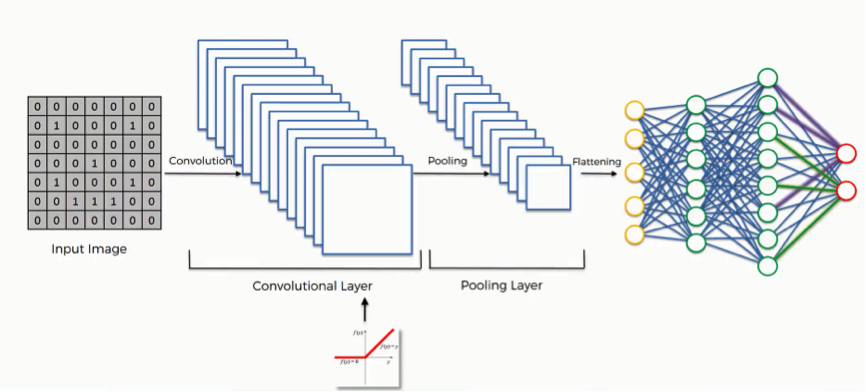Summary
Since we’re now done with this section, let’s make a quick recap of what we learned about convolutional neural networks. In the diagram below, you can see the entire process of creating and optimizing a convolutional neural network that we covered throughout the section.

As you see and should probably remember from the previous tutorials, the process goes as follows:
- We start off with an input image.
- We apply filters or feature maps to the image, which gives us a convolutional layer.
- We then break up the linearity of that image using the rectifier function.
- The image becomes ready for the pooling step, the purpose of which is providing our convolutional neural network with the faculty of “spatial invariance” which you’ll see explained in more detail in the pooling tutorial.
- After we’re done with pooling, we end up with a pooled feature map.
- We then flatten our pooled feature map before inserting into an artificial neural network.
Throughout this entire process, the network’s building blocks, like the weights and the feature maps, are trained and repeatedly altered in order for the network to reach the optimal performance that will make it able to classify images and objects as accurately as possible.
By this point, you have acquired all the knowledge you need for you to proceed to the more practical applications of the concept of convolutional neural networks.
Continue with Softmax & Cross-Entropy by Clicking Here
Additional Reading
If you’re still craving more on the subject, though, you can always do some extra reading of your own.
This blog post by Adit Deshpande from 2016 titled The 9 Deep Learning Papers You Need To Know About (Understanding CNN’s Part 3) will brief you up on 9 real-life applications of what you learned in this section, and you can then go on to study these examples in more depth.
Granted, you’ll stumble on quite a few concepts that will be brand new for you, but with the knowledge you have now, you’ll be able to manage a general overview on these papers.
Also, as you train more, you can always revisit these case studies every once in a while with your newly-acquired experience.

